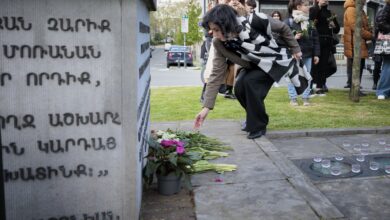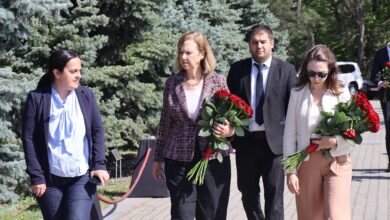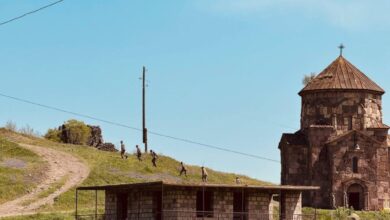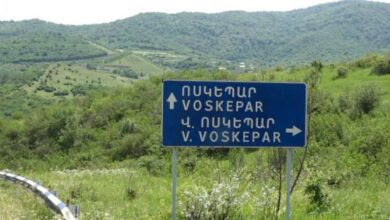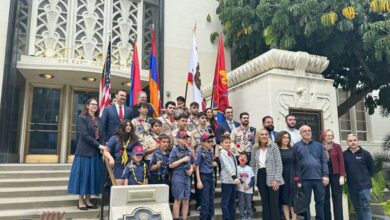Rev. Nersessian to lecture on Armenian Christian tradition in London
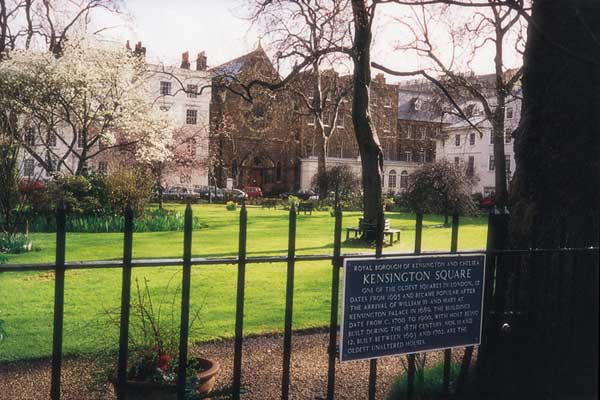
Centre for Eastern Christianity at the Heythrop College, University of London will host a series of Lent term lectures on “The Armenian Christian Tradition: History, Doctrine, Spirituality and Liturgy” given by Revd Dr Nerses Nersessian, the Armenian reporter informs.
The Rev Dr Nerses (Vrej) Nersessian was born in Tehran in 1948. He was educated at the Armenian College in Calcutta, the Gevorgian Theological Academy in Holy Etchmiadzin (Armenia) and King’s College, University of London. He has a Bachelor’s degree in Theology and a Doctorate in Modern Greek and Byzantine Studies.
His doctoral thesis on The Tondrakian Movement, a religious movements in the Armenian Church from the fourth to the fifth centuries was published in 1987 in London and reprinted in the Princeton Theological Monograph series 15, in Pennsylvania a year later. In 1975 he joined the British Library curatorial staff as curator responsible for the manuscripts and printed books of the Christian Middle East section, a post which he held until his retirement in August 2011.
Among his British Library publications are: Catalogue of Early Armenian Printed Books. A history of Armenian Printing (1512-1850),(1980), Armenian Illuminated Gospel Books(1987), Treasures from the Ark,1700 years of Armenian Christian Art, a catalogue of an exhibition of the same name held at the British Library to mark the 1700th anniversary of the conversion of Armenia to Christianity, The Bible in the Armenian Tradition (2001) and most recently A Catalogue of the Armenian Manuscripts in the British Library acquired since the year 1913 and of collections in other libraries in the United Kingdom (2012) described as ‘a fitting culmination to the long and distinguished career ‘.
He is the author of the articles on the Armenian Church Tradition in Jesus in History, Thought, and Culture. An Encyclopedia (ABC/CLIO2003), In the Beginning. Bibles before the year 1000 (Arthur M.Sackler Gallery, 2006), The Blackwell Companion to Eastern Christianity (Blackwell, 2007), Sacred Books of the Three Faiths: Judaism, Christianity,Islam (The British Library, 2007), Byzantium 330- 1453 (Royal Academy of Art, 2009), The Orthodox Christian World (Routledge 2012).
He was ordained a priest in 1983, elevated to the rank of archpriest in 1991 by Vazgen I Catholicos of All Armenians of Blessed memory, and in October of this year he was awarded the distinguished medal of Saint Nerses Shnorhali by His Holiness Garegin II, Catholicos of All Armenians, for his distinguished career in the British Library and devoted services to the Armenian Church. Presently he is the Priest-in -charge of the Armenian church of Saint Eghishe, Cranley Gardens, London. He is married to Leyla Nersessian, has two sons and two grandchildren.
Schedule lectures are as follows:
30 January 2013
The emergence of Armenia as a Christian state in the first half of the fourth century and the founding of the Armenian Apostolic Orthodox Church.
A brief introduction to the country and its people before its conversion to Christianity during the reign of King Trdat in the first half of the fourth century. The conclusion of the formative period, with the invention of the Armenian alphabet, the work of the ‘Translators’, the joy of having the words of God in Armenian finally leading to the founding of an Armenian literary tradition. Koriwn the biographer of St Mesrop Mashtots, Eghishe the historian of the Battle of Avarayr and Eznik’s work ‘Against the Sects’ a treatise on God and the nature of evil.
6 February 2013
The Christology of the Armenian Orthodox Church. The attitude of the Armenian Church to the first eight Ecumenical Councils, 325 – 787AD.
In the History of the Armenians of Agathangelos, which has an account of the conversion of Armenia, and a distinct section called The Teaching of St Gregory the Illuminator the basic doctrinal tenets of the Christian faith are expounded: belief in the Trinity: the Father who created us, the Son who saved us, and the Spirit by whom the world was made and who acts in the world. The History also testifies that Gregory’s son Aristakes, and whose name does appear in the list of signatories, attended the Council of Nicaea in 325. He brought the Nicene creed back to Armenia, to which St Gregory added the doxology ‘As for us, we shall glorify him who was before the ages, worshipping the Holy Trinity and the one Godhead the Father and the Son and the Holy Spirit, now and always and unto ages of ages. Amen’. This simple but precise declaration has been the core element of the doctrinal position of the Armenian Church which has remained intact throughout the centuries.
20 February
Contacts and initiatives for reunion between the Armenian, Greek, and Roman Churches. The Ecumenical approaches of Nerses IV Klayetsi, called Shnorhali (1102-1173) and Nerses Lambronatis (1152-1198).
The establishment of the Armenian Kingdom of Cilicia in about 1199 brought the Armenian Church into direct contact with the Roman Catholic and Greek Churches. The chance meeting in 1165 of St Nerses with Alexious, the Byzantine duke of Mamistra, became the starting point of Armeno-Greek ecclesiastical relations. These contacts continued until almost the end of the century in 1193. The Chalcedonian question in all its dimensions and complications dominated discussion at every level and stage. The two doctrinal works produced by Nerses called The Confession of Faith (Gir hawatoy khostovanout’ean Hayastaneayts ekeghetswoy) and the Definition of faith of the Armenian Church (Sahmank’ Hawatoy) found positive acceptance in both Churches, but Greeks and the Latins were not prepared to discuss the problem of church unity officially.
27 February
The Armenian Church under the political authority of Ottoman Turkey, Tsarist Russia, and the Soviet Union


